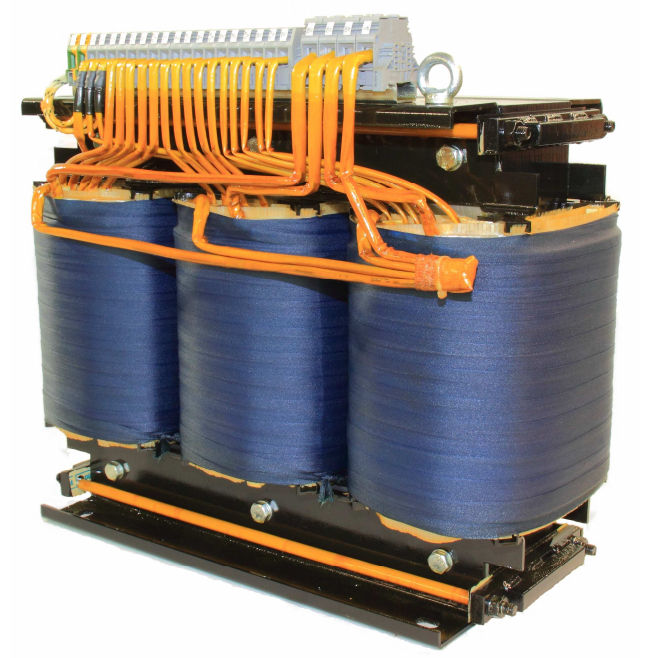
3 Phase Transformers have been designed because 3-phase electricity is used so often for power distribution systems because they produce a balanced load. It makes sense that there would be a requirement for three-phase transformers to be able to step voltages up or down. This is only partially true, as regular single-phase transformers can be ganged together to transform power between two three-phase systems in a variety of configurations, eliminating the requirement for a special three-phase transformer. However, special three-phase transformers are built for those tasks, and are able to perform with less material requirement, less size, and less weight than their modular counterparts.
3 Phase Power Transformers are constructed by winding three single phase transformers on a single core. These transformers are put into an enclosure which is then filled with dielectric oil. The dielectric oil performs several functions. SInce it is a dielectric, a nonconductor of electricity, it provides electrical insulation between the voltage windings and the case. It is also used to help provide cooling and to prevent the formation of moisture, which can deteriorate the winding insulation.
If 3 Phase Power Transformer is needed and a 3 Phase Power Transformer of the proper size and turns ratio is not available, three single phase transformers can be connected to form a three phase supply bank. When three single phase transformers are used to make a three phase transformer bank, their primary and secondary windings are conected in a wye or delta connected method or other expressing other delta configurations.
3-phase electric power is a common method of electric power transmission. It is a type of polyphase system mainly used to power motors and many other devices. A three-phase system uses less conductor material to transmit electric power than equivalent single-phase, two-phase, or direct-current systems at the same voltage. In a three-phase system, three circuit conductors carry three alternating currents (of the same frequency) which reach their instantaneous peak values at different times. Taking one conductor as the reference, the other two currents are delayed in time by one-third and two-thirds of one cycle of the electrical current. This delay between "phases" has the effect of giving constant power transfer over each cycle of the current, and also makes it possible to produce a rotating magnetic field in an electric motor. Three phase transformers are used throughout industry to change values of three phase voltage and current. Since 3 phase power is the most common way in which power is produced, transmitted, an used, an understanding of how 3 phase transformer connections are made is essential.
Read Our Other Utility Transformer Pages: Padmount Transformer Explained, Pole Mounted Transformers, Electrical Power Transformers, Power Transformers Explained, Transformer Manufacturers, Step Up Transformer, High Voltage Transformers Explained, What is an Auto Transformer?